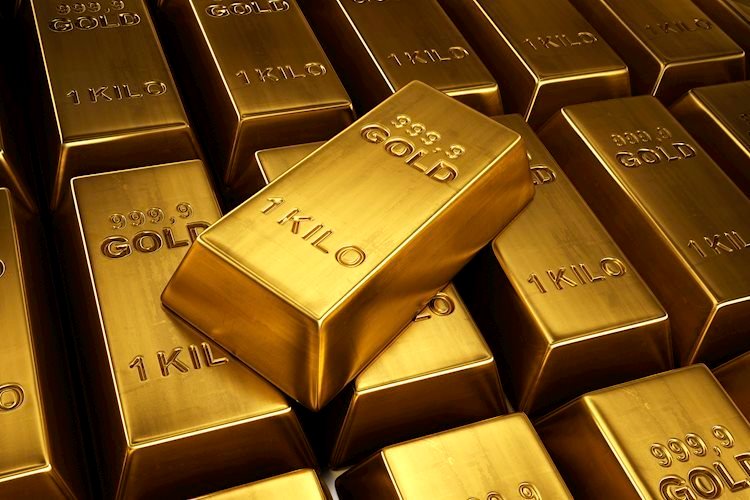- Gold price gains momentum around $2,515 in Monday’s early Asian session.
- Fed’s Powell said “the time has come” for the US Fed to begin lowering interest rates.
- The escalating tensions in the Middle East might further boost safe-haven assets like Gold.
Gold price (XAU/USD) holds positive near $2,515 an ounce during the early Asian session on Monday amid the weaker US Dollar (USD) and dovish comments from the Federal Reserve (Fed). The uptick of the yellow metal is bolstered by the speech by Fed Chair Jerome Powell, signalling that time has come for interest rate cuts starting this September.
Fed Chair Jerome Powell delivered the dovish message at the Kansas City Fed’s annual economic symposium in Jackson Hole on Friday, which has weighed on the USD broadly. Fed’s Powell said that “the time has come” for the central bank to begin lowering interest rates. Powell acknowledged recent softness in the labor market in his speech and stated that the Fed did not “seek or welcome further cooling in labor market conditions.”
Financial markets have fully priced in a 25 basis points (bps) rate cut, while the chance for a deeper cut stands at 36.5%, up from 24% last week, according to the CME FedWatch Tool. The growing expectations of easing monetary policy by the Fed might further support the precious metal as it makes gold more attractive for other currency holders.
Furthermore, Hezbollah launched hundreds of rockets and drones at Israel early on Sunday, as Israel’s military said it carried out a wave of pre-emptive strikes across southern Lebanon to thwart a large-scale rocket and drone attack by Hezbollah, per Reuters. The ongoing geopolitical tensions in the Middle East might boost the safe-haven asset demand, benefiting the Gold price.
Gold FAQs
Gold has played a key role in human’s history as it has been widely used as a store of value and medium of exchange. Currently, apart from its shine and usage for jewelry, the precious metal is widely seen as a safe-haven asset, meaning that it is considered a good investment during turbulent times. Gold is also widely seen as a hedge against inflation and against depreciating currencies as it doesn’t rely on any specific issuer or government.
Central banks are the biggest Gold holders. In their aim to support their currencies in turbulent times, central banks tend to diversify their reserves and buy Gold to improve the perceived strength of the economy and the currency. High Gold reserves can be a source of trust for a country’s solvency. Central banks added 1,136 tonnes of Gold worth around $70 billion to their reserves in 2022, according to data from the World Gold Council. This is the highest yearly purchase since records began. Central banks from emerging economies such as China, India and Turkey are quickly increasing their Gold reserves.
Gold has an inverse correlation with the US Dollar and US Treasuries, which are both major reserve and safe-haven assets. When the Dollar depreciates, Gold tends to rise, enabling investors and central banks to diversify their assets in turbulent times. Gold is also inversely correlated with risk assets. A rally in the stock market tends to weaken Gold price, while sell-offs in riskier markets tend to favor the precious metal.
The price can move due to a wide range of factors. Geopolitical instability or fears of a deep recession can quickly make Gold price escalate due to its safe-haven status. As a yield-less asset, Gold tends to rise with lower interest rates, while higher cost of money usually weighs down on the yellow metal. Still, most moves depend on how the US Dollar (USD) behaves as the asset is priced in dollars (XAU/USD). A strong Dollar tends to keep the price of Gold controlled, whereas a weaker Dollar is likely to push Gold prices up.

